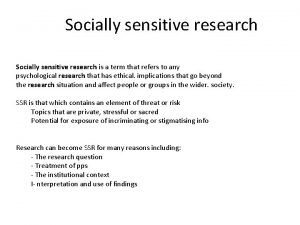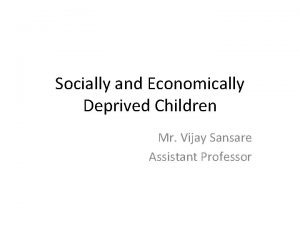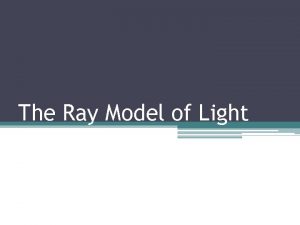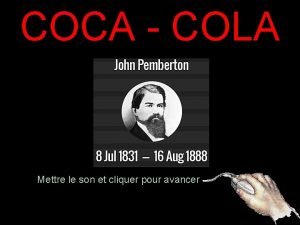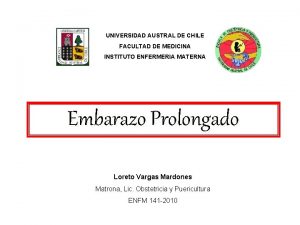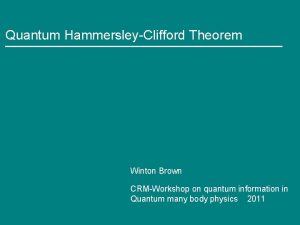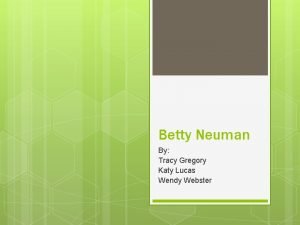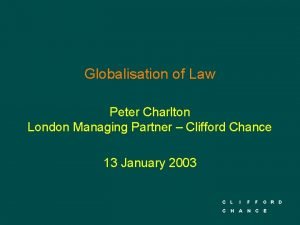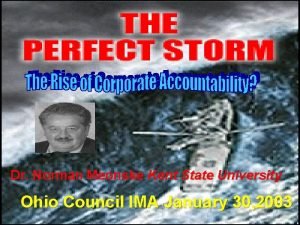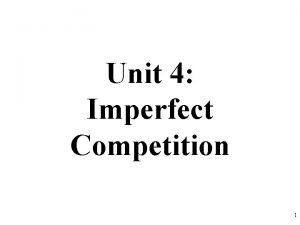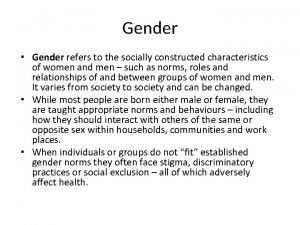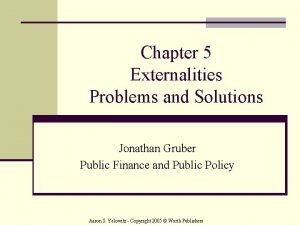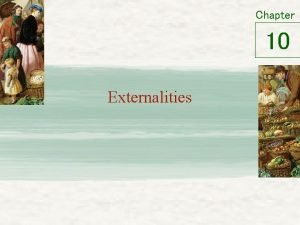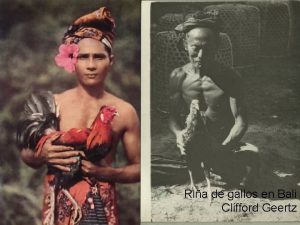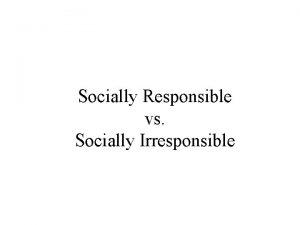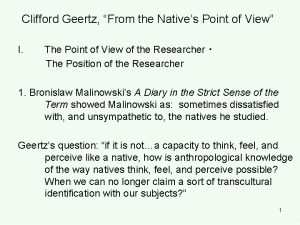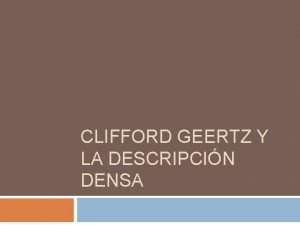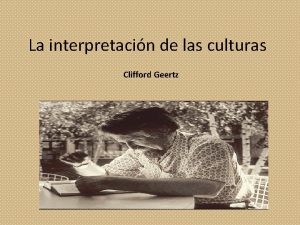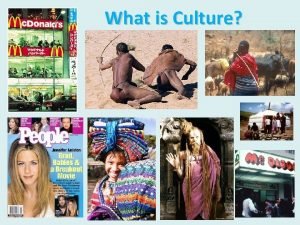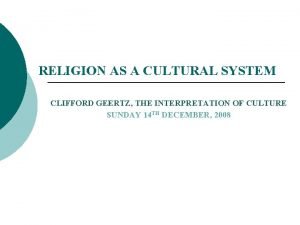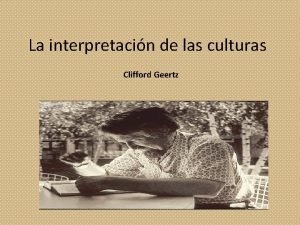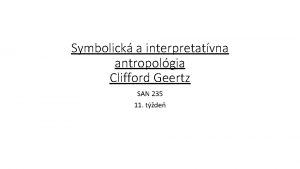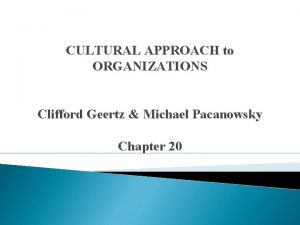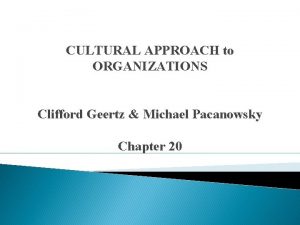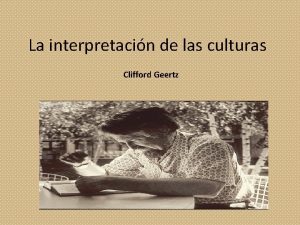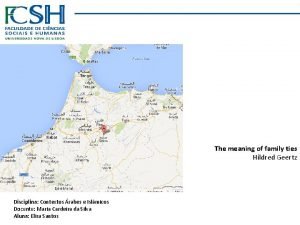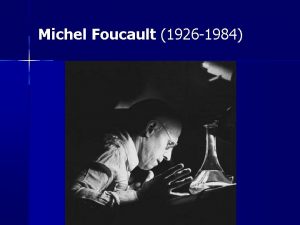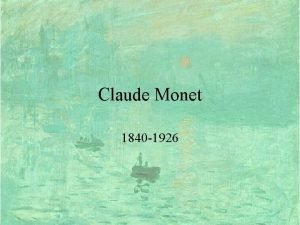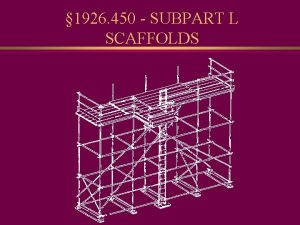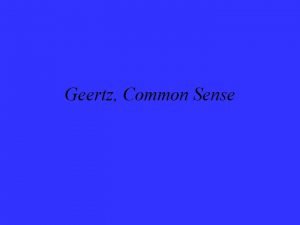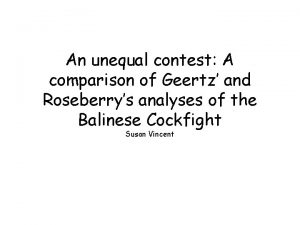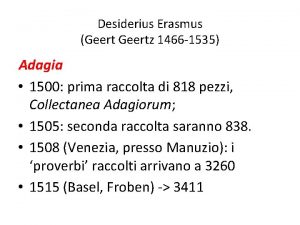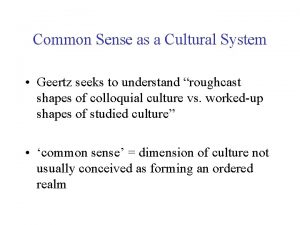Clifford Geertz 1926 2006 Meaning is socially historically



































- Slides: 35

Clifford Geertz (1926 – 2006) Meaning is socially, historically, and rhetorically constructed.

Clifford Geertz Life • born in San Francisco in 1926 • Served in US Navy • B. A. in philosophy from Antioch College in 1950; then attended Harvard University’s Department of Social Relations, an interdisciplinary program led by Talcott Parsons. • Geertz trained as an anthropologist, and conducted his first fieldwork, together with his wife in Java, with funding from the Ford Foundation. There he studied the religious life of a small, upcountry town for twoand-a-half years. He earned his Ph. D. in 1956 with a dissertation entitled Religion in Modjokuto: A Study of Ritual Belief In A Complex Society. • Died in 2006 as professor emeritus at the Institute for Advanced Study in Princeton. -- excerpted from https: //en. wikipedia. org/wiki/Clifford_Geertz

The American Anthropological Tradition North American anthropologists saw Native American Indians as a primitive people; but they also saw that they were made up of different tribes, languages and cultures, such that broad generalizations were impossible. Landscape seemed to have an impact, and American anthropologists were able to study native tribes in their natural habitat. In short, they did actual fieldwork Geologists and ethnologist John W Powell (1834 – 1902) with Native American Indian Thus American anthropologists came to have a more intimate interchange with “their” tribes than European anthropologists could with theirs. .

Franz Boas (1858 -1942) Originated the notion of "culture" as learned behaviors. Gave modern anthropology its rigorous scientific methodology, patterned after the natural sciences. Emphasized detailed research first, followed by generalizations, as opposed to the British school of anthropology which emphasized the creation of grand theories, to be fleshed out in the armchair. Rejected European ideas of cultural progress, racial determinism and the like At Columbia University, he mentored many of the top names in American anthropology, including Ruth Benedict and Margaret Mead. Developed the idea of the diorama to display not artifacts, but culture. [While at the American Museum of Natural History, Boas created the Northwest Coast Indian exhibit which remains intact to this day. ]

Ruth Benedict (1887 -1948) Her formative research was with the Zuni Pueblo “Came to feel that it was possible to view a primitive culture holistically, much as works of art are viewed in our culture - as something to be discovered, something that was not fashioned but that came to be in an integrated whole. ” (M. Mead, “Ruth Benedict”, 1974 p. 19)

Margaret Mead • Proposed that culture shaped various aspects of human emotion and activity. • Her research focus was on a variety of cultural topics including sexual morality, women’s roles, child rearing, tribal and racial identity, drug and alcohol addiction, etc.

Talcott Parsons (1902 -1979) • Drew heavily from Durkheim and Weber • Theory: that societies evolve to adapt to their physical and social environment. In this process they define certain goals and strive to enlist individuals to achieve these goals in an integrated and coordinated fashion. Individuals in a society “voluntarily” chose to perform their roles according to social expectations.

Talcott Parsons II CULTURE (A system of generally recognized symbols) SOCIETY (Social System) INDIVIDUAL

Syntax Definition of syntax 1 a: the way in which linguistic elements (such as words) are put together to form constituents (such as phrases or clauses) b: the part of grammar dealing with this 2: a connected or orderly system : harmonious arrangement of parts or elements, such as the syntax of classical architecture -- Merriam-Webster

“Thick Description” Brief Note on the Origins, Evolution, and Meaning of the Qualitative Research Concept “Thick Description” by Joseph G. Ponterotto ( Fordham University, New York) 1. involves accurately describing and interpreting social actions within the appropriate context in which the social action took place; 2. captures the thoughts, emotions, and web of social interaction among observed participants in their operating context; 3. assigns motivations and intentions for the said social actions; 4. describes the context for, and the specifics of, the social action so well that the reader experiences a sense of verisimilitude as they read the researcher’s account; 5. evokes “thick interpretation” of these actions, which lead to “thick meaning” of the findings that resonate with readers. -- [http: //www. nova. edu/ssss/QR/QR 11 -3/ponterotto. pdf]

“Thick Description” • Intensive, small-scale, dense descriptions of social life from observation, through which broader cultural interpretations and generalizations can be made. [encyclopedia. com/doc] • refers to the detailed account of field experiences in which the researcher makes explicit the patterns of cultural and social relationships and puts them in context [http: //www. qualres. org/Home. Thic-3697. html] Using the action of “winking, ” Geertz examines how—in order to distinguish the winking from a social gesture, a twitch, etc. — we must move beyond the action to both the particular social understanding of the “winking” as a gesture, the mens rea (or state of mind) of the winker, his/her audience, and how they construe the meaning of the winking action itself. “Thin description” is the winking. “Thick” is the meaning behind it and its symbolic import in society or between communicators. [http: //academic. csuohio. edu/as 227/spring 2003/geertz. htm]

“Deep Play: Notes on the Balinese Cockfight” These were illegal in Indonesia but people continued to engage in this sport anyway. As an anthropologist, Geertz wanted to know why; what was the cultural significance?

Cockfight Interpretation The title of the essay comes from Jeremy Bentham who defined "deep play" as a game with stakes so high that no rational person would engage in it. Geertz observed that the amounts of money and status involved in the illegal and very brief cockfights make Balinese cockfighting "deep play. “ He goes on to conclude that the cocks are taken to stand in for powerful men in the villages (note: the double meaning of the word exists in Balinese as in English). Thus the rituals of the game can be seen as a Balinese comment on themselves. In other words, the game reenacts the network of social relationships that govern traditional Balinese life. -- https: //en. wikipedia. org/wiki/Deep_Play: _Notes_on_the_Balinese_Cockfight

Clifford Geertz • Tries to avoid both functionalism (religion is what it does) and reductionism (religion is really something else) • Close to Weberian Verstehen: idea is to understand what religion means to its practitioners. • Accepts the Durkheimian idea that religion and society are intertwined.

Geertz; Bottom Line • All human cultural behavior is at some level a symbolic ritual, that is, a “narrative” or enactment of social values. • Only through a “thick description” of cultural rituals and their elements can we understand its syntax and so “unpack” what a ritual means to those engaged in it.

“ISLAM OBSERVED” IN MOROCCO

10 Minute Break


Center and Periphery and issues of identity Uqba ibn Nafi is traditionally regarded as the conqueror of North Africa. He only stopped when he reached the ocean on the coast of Morocco. According to the tradition, he spurred his horse into the waves, and raising his eyes to heaven, exclaimed: Great God! if my course were not stopped by this sea, I would still go on, to the unknown kingdoms of the West, preaching the unity of the holy name, and putting to the sword the rebellious nations who worship another gods than Allah.

For Geertz • There is no such thing as “Islam” per se. • There are only various Islamic communities.

MOROCCO – THE LAND Seacoast vs mountainous desert

Arab vs Berber = indigenous nomadic tribes of the mountains and hilltops behind the N. African coastal plain. Converted to Islam by the 11 th century. Most are now sedentary, but tend to inhabit the border regions with the poorest land.

North African Berbers Although distinct from Arabs, most Berbers across North Africa have been “arabized”. They are Muslims and all but the most isolated speak Arabic (as well as Berber). Their first loyalty tends to be to family, clan and tribe, rather than to the Berber “people” or to the State.

Berber Marabout The idea of charismatic holy men predates Islam in the western part of North Africa. Muslim soldiers who were garrisoned (murbat) in North Africa became seen as religious guides as the areas converted to Islam. So a marabout today is a mix between a Muslim scholar, a Sufi teacher and a Berber holy man. Some may be like mendicant monkswandering and begging for a livelihood. Often their graved become shrines.

Sufi Islam A spiritual Islam, usually divided into groups (tariqa) that follow a particular master of teacher (Sidi). Tariqat can use music, chant, dance, meditation and other exercises to induce heightened spiritual awareness.

Marabout Shrines Shrine in desert town of Figuig, Morocco Shrine of Shaykh al-Kamil Sidi al-Hadi Ben Aissa al-Hassani, Patron Saint of Meknes The burial places of saints, marabouts and other holymen are very often sites of pilgrimage in Morocco. BTW, this includes non-Muslim (like Jewish) holy men as well.

Moroccan Islam Moroccans have a deep spiritual orientation toward Islam. They regard their mosques to be especially holy sites. Thus mosques in Morocco are generally not open to non-Muslims

Color Green The color green is the “sacred” color of Islam, as seen in the flag. It said to have been Muhammad’s favorite color. It is sometimes associated with the greenery of Paradise. Others see it as a reference to the living green oases in the otherwise dead desert. Often doors, windows and other points of entry on houses are painted green to keep out evil spirits.

Henna The application of Henna to make intricate (but temporary) “tattoos” is a Moroccan custom. It is usually used by women and only in special occasions, like a wedding. It has religious significance since putting it on is accompanied with some ritual and chanting. Henna is regarded by some as having “baraka” and so is now sometimes found on men’s beards

Modernization and Salafi Like Indonesia, Morocco is undergoing modernization and secularization on the one hand, and the growth of very conservative “restorationist” Islam (Salafi) on the other.

Some terms • alayhi s-salām -- peace be upon him; used after mentioning the Prophet’s name; • In sha ‘a llah (Inshallah)– if Allah is willing • Al- Hamdu lillah – Thanks be to Allah

Shrine of Moroccan Saint http: //www. youtube. com/watch? v=ZD 77 KHq. Tjdk • The Mausoleum of Sidi Abd El Aziz al Tebaa (d. 1499), a follower of Imam Jazuli (Shadhili Tariqa). Al Jazuli , was a Moroccan Sufi leader of the Berber tribe of the Jazulah. He is best known for compiling an extremely popular Muslim prayer book. Many Moroccans consider al-Jazuli to be one the seven saints of Marrakesh. This small mausoleum is in the northern city of Marrakesh.

Some Observations • • Visiting the grave of a Sufi leader; Arrive by horse-drawn carriage in distinct robes; Note green color, henna in beards; Have a leader; fall into a kind of order; Chant: when does it start and stop? The grave is important for (barren) women; Use of camera is controversial; Language used by narrator is “sacred”;

Questions • Is Geertz a reductionist or functionalist? • Does he capture something of the “sacred” in religion? • Would he agree with Durkheim that religion is largely a matter of community building?

Next Week
 Thick description
Thick description Socially sensitive research definition
Socially sensitive research definition Socially deprived child meaning
Socially deprived child meaning Example of an individual adjustment
Example of an individual adjustment Whats historical significance
Whats historical significance Clearly explain what is meant by the term geometric optics
Clearly explain what is meant by the term geometric optics Physical activity was historically primitive.
Physical activity was historically primitive. Historically american sign language is related to
Historically american sign language is related to Historically, realignments occur
Historically, realignments occur Cliff baxter
Cliff baxter Clifford consulting and research
Clifford consulting and research Danna nelson
Danna nelson Gwen clifford
Gwen clifford Clasificacion clifford embarazo postermino
Clasificacion clifford embarazo postermino Ann eliza clifford lewis
Ann eliza clifford lewis Clifford sifton open door policy
Clifford sifton open door policy Síndrome de postmadurez de clifford
Síndrome de postmadurez de clifford Hammersley-clifford
Hammersley-clifford Clifford neuman rate my professor
Clifford neuman rate my professor Stephen poplawski
Stephen poplawski Gari clifford
Gari clifford Bridgestone commercial learning center
Bridgestone commercial learning center Gari clifford
Gari clifford Peter charlton clifford chance
Peter charlton clifford chance Clifford tse
Clifford tse J. clifford baxter
J. clifford baxter Clifford robinson md
Clifford robinson md Discursive competence
Discursive competence Social optimum quantity
Social optimum quantity Socially valued resources
Socially valued resources Socially maladjusted vs emotional disturbance
Socially maladjusted vs emotional disturbance Gender refers to:
Gender refers to: Socially optimal level
Socially optimal level What is the socially optimal quantity
What is the socially optimal quantity Market power market failure
Market power market failure Social health means
Social health means

